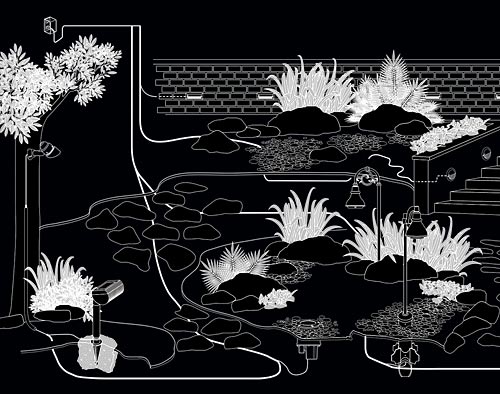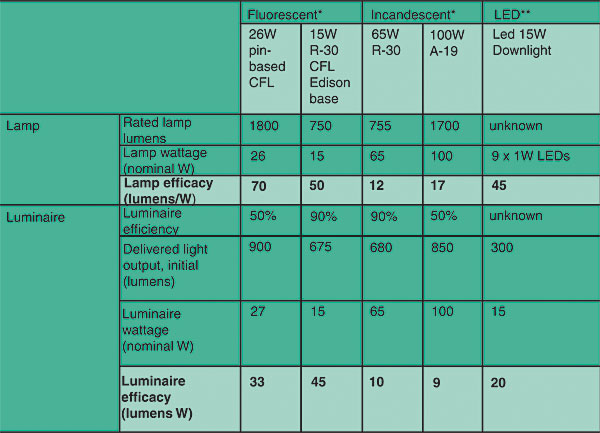The Fourth Source: Light-Emitting Diodes (LEDs) for General Illumination
LED fixtures: Characteristics and typical uses
While its current dominance of signage and decorative architectural applications underscores its effectiveness, SSL has met new challenges for general interior and exterior applications. Significant improvements have come in key areas of lighting source performance, including: lumen output; color stability and range; and effective service life. As LEDs have improved in performance over the last several years, illumination engineers and lighting companies have dubbed the technology a viable and promising "fourth source" of electrical illumination, along with fluorescent, HID and incandescent lamps.
Â
|
Â
General illumination applications incorporating LEDs are a newcomer to the lighting world. But the small size of LEDs and their ability to be mounted in groups and arrays provides flexibility in the shape, size and illumination output of resulting fixtures. In many cases, the LED's size and modular format simplifies the design and specification of a project's lighting system. LEDs can also work with standard wall-mounted dimmers, unlike compact fluorescent lamps (CFLs), according to the U.S. Department of Energy (DOE).
LED fixture development
The relatively new white LEDs, which have useful life spans of 50,000-100,000 hours, have been paired with a recent generation of LED fixtures that are rugged and highly energy-efficient. Industry testing has shown that the true white light they produce is consistent and comparable to other sources, making them a viable source for general illumination.
Over time, the color temperature of the white light created by LEDs changes, usually so slightly as to be imperceptible. But the "color shift" does affect the color temperature and light quality enough so that two LEDs made by the same manufacturer, one used for the first time and the other after tens of thousands of hours of service, would produce a noticeably different quality of light. LED manufacturers minimize the effect of the color shift by inspecting LEDs after manufacture and separating them into batches that have the same visual and performance characteristics. This manufacturing process is called "binning."
Another characteristc of LEDs is that they are highly directional as compared with other sources. According to DOE, "The inherent directionality of LEDs is a potential advantage for their use in downlighting applications. If designed effectively, LED downlights could essentially eliminate luminaire light losses."
Â
|
Â
Regardless of directionality, however, LED sources also need to provide enough light to the target location or object, a measure of the total luminous flux incident on a surface per unit area called illuminance. Second, that illuminance must be delivered in a reasonably energy-efficient way, a characteristic ratio known as efficacy that measures the lumens provided at the target or task area to the number of watts needed to achieve that light level. The DOE compared typical light output and efficiency of residential-style fluorescent and incandescent recessed downlights and an LED downlight, and found the LEDs to be surprisingly efficacious.
The reason LEDs are so energy-efficient is explained by how they produce light. Conventional light-emitting processes involve generating excess heat or exciting gasses to obtain effective light levels. These processes waste significant energy because a large portion of input electricity is not directed toward producing visible light. LEDs, on the other hand, produce light through a nontoxic chemical interaction that generates very little heat. In this way, a much higher percentage of the electrical demand is utilized toward light production, considerably reducing overall power consumption.











